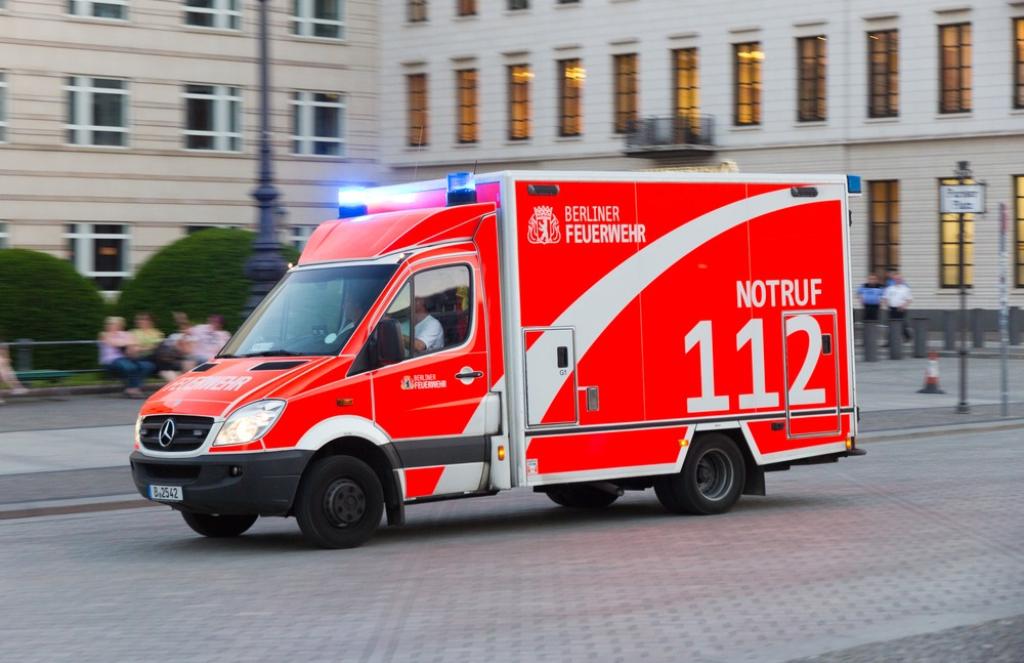Thessaloniki gets ready for its metro launch in November
The underground rapid transit lines have been under construction for almost two decades due to various project delays
 TheMayor.EU logo
TheMayor.EU logo 
An emergency vehicle equipped with 5G can provide medical assistance way faster, Source: Depositphotos
Digital emergency care may now save even more lives, thanks to new technologies
Time is an important aspect of emergency medicine. The period elapsed before decisions concerning targeted diagnosis and subsequent therapy are made can be crucial for patients’ chances of survival.
Until now, this time span was dependent on the distance to the nearest clinic as well as the availability of specialist staff and equipment there. The use of 5G technology can significantly shorten this critical time span. Using digital solutions and transfer technologies, it will be possible to relocate diagnostics and initial therapy steps to the site of the emergency.
In the German Metropolitan Region of Rhine-Neckar (containing cities such as Mannheim, Ludwigshafen and Heidelberg) a regional and interdisciplinary consortium is evaluating the potential of the 5G technology by using the example of a patient with a stroke.
A neurological expert from the hospital can be consulted via video in real-time while the patient is travelling in the ambulance. In addition, the use of a mobile cranial computed tomography (CT) located in the vehicle will be tested. All the data obtained can be transmitted, analyzed, and evaluated securely and in real-time via 5G.
The use of artificial intelligence is also being tried out. This means better diagnoses and faster decisions regarding the type and location of further treatment can be made in the ambulance. The project, funded by the German Federal Ministry of Digital and Transport (BMDV), is thus paving the way for integrated, mobile and telemedical emergency care.
This integrated mobile digital healthcare enables earlier and more accurate decisions regarding diagnosis and initial therapy steps. This is extremely important in all emergency situations - and especially in the cases of strokes, pulmonary embolism or myocardial infarction.
In the long term, the knowledge gained within the rescue network can also be transferred to other disease patterns and to a larger geographical area. There is great potential in the provision of care in rural areas, where hospitals and specialist expertise are less widespread. In all areas, the morbidity and mortality of emergency patients can be reduced, thus increasing the chances of survival.
Compared to previous mobile communications standards, 5G technology has stable and fast data transmission and enables reliable data exchange in real-time - even in locations with a high density of users. In addition, the standards regarding the protection of personal data as well as data integrity (i.e., the technical protection of data) are particularly high.
This is also supported by the subdivision of the network into different segments, known as network slicing, and by the establishment of localized and specially protected cellular networks, known as campus networks.
Source: Metropolitan Region Rhine-Neckar

The underground rapid transit lines have been under construction for almost two decades due to various project delays

Now you can get your wine in Talence by paying directly in Bitcoin

That’s because the state has to spend money on updating the railway infrastructure rather than subsidizing the cost of the popular pass

Rethinking renewable energy sources for the urban landscape

The examples, compiled by Beyond Fossil Fuels, can inform and inspire communities and entrepreneurs that still feel trepidation at the prospect of energy transition

Now you can get your wine in Talence by paying directly in Bitcoin

The 10th European Conference on Sustainable Cities and Towns (ESCT) sets the stage for stronger cooperation between the EU, national and local level to fast track Europe's transition to climate neutrality.

At least, that’s the promise made by the mayor of Paris, Anne Hidalgo

The underground rapid transit lines have been under construction for almost two decades due to various project delays

At least, that’s the promise made by the mayor of Paris, Anne Hidalgo

Hostal de Pinós is located in the geographical centre of the autonomous region

Despite its church-y name, the district has long been known as the hangout spot for the artsy crowds

Urban dwellers across the EU are having a say in making their surroundings friendlier to people and the environment.

Forests in the EU can help green the European construction industry and bolster a continent-wide push for architectural improvements.

Apply by 10 November and do your part for the transformation of European public spaces

An interview with the Mayor of a Polish city that seeks to reinvent itself

An interview with the newly elected ICLEI President and Mayor of Malmö

A conversation with the Mayor of Lisbon about the spirit and dimensions of innovation present in the Portuguese capital














